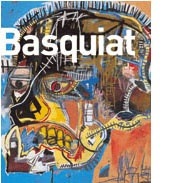Hong Kong's Film and Television Market (FILMART) is tagged as the leading market in Asia says FILMART survey
FILMART's position as the leading trade platform for the film and entertainment industry in Asia has once again been confirmed, according to an independent survey released today (24 March).
The survey was commissioned by the Hong Kong Trade Development Council (HKTDC) and conducted by Citigate DVL Smith. A total of 336 were interviewed, comprising of 253 visitors and 83 exhibitors at FILMART this week (22 - 24 March 2005).
According to interviewees, Hong Kong's FILMART ranked first as the most important film and entertainment industry event, followed by the Tokyo Film Market (TIFCOM) and the Pusan Film Market.
Among industry players surveyed, over 65% agree that Hong Kong is the major content production centre in Asia, driven by creative talent, state-of-the art technology and freedom of expression. 75% of respondents also regard Hong Kong as a major content distribution centre in Asia because of its international profile and strong distribution network.
HKTDC's Director of Service Promotion, Mr. Raymond Yip said, " This year's success at FILMART, further strengthens Hong Kong's position as the major content and distribution hub of Asia. FILMART represents a golden opportunity for International companies to explore the emerging business opportunities with Hong Kong as a gateway into the Chinese mainland, especially with the implementation of CEPA. This year, we have seen a double-digit growth in the number of exhibitors and visitors from Europe and the US.
Key findings of the survey are as follows:
Sectors with best business growth prospects: digital entertainment, followed by TV and film.
Company expansion plans within the next three years: 74% and 71% of the surveyed companies plan to expand in respectively in Hong Kong and the Chinese mainland.
Desirable improvement areas in the Chinese mainland: Increased effort to combat piracy, simplification of censorship and the adoption of film classification.
FILMART 2005 attracted over 350 exhibitors from 23 countries and regions, a 15% increase from 2004. The number of international visitors rose dramatically by more than 40%. This year, FILMART celebrated its 9th birthday as part of the inaugural Entertainment Expo Hong Kong.

 The co-curators for Basquiat include Marc Mayer, Basquiat Project Director, former Deputy Director for Art, Brooklyn Museum, and now Director of the Musée d’art contemporain de Montréal; Fred Hoffman, Ahmanson Curatorial Fellow at The Museum of Contemporary Art, Los Angeles; Kellie Jones, Assistant Professor of the History of Art and African American Studies, Yale University; and Franklin Sirmans, an independent writer, editor, and curator based in New York.
The co-curators for Basquiat include Marc Mayer, Basquiat Project Director, former Deputy Director for Art, Brooklyn Museum, and now Director of the Musée d’art contemporain de Montréal; Fred Hoffman, Ahmanson Curatorial Fellow at The Museum of Contemporary Art, Los Angeles; Kellie Jones, Assistant Professor of the History of Art and African American Studies, Yale University; and Franklin Sirmans, an independent writer, editor, and curator based in New York.